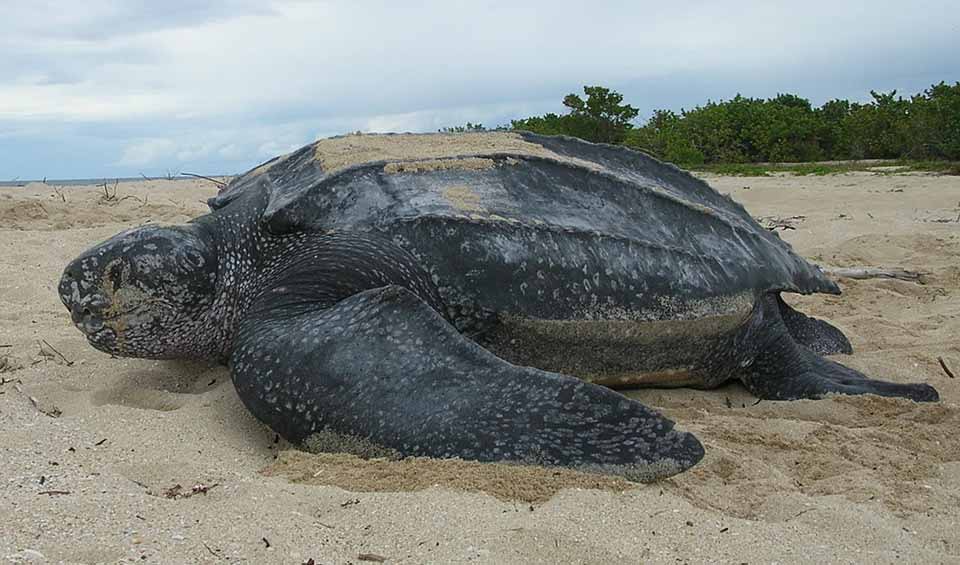Dermochelyidae – Leatherback sea turtle
The largest of all living turtles and the heaviest non-crocodilian reptile, reaching lengths of up to 2 meters (6.5 ft)
Leatherbacks are most easily recognized by their distinctive shells. Unlike other sea turtles with hard, bony carapaces, the leatherback’s shell is composed of a thin, tough, rubbery skin reinforced by thousands of tiny bone plates. This makes their shell more flexible and allows it to compress during deep dives, reaching depths of 1,280 meters (4,200 feet) or more, rather than cracking under pressure.
Leatherbacks are also the only sea turtles lacking scales and a teardrop-shaped body, predominantly black with a pinkish-white mottled underside marked with spots and streaks. Another characteristic feature is the presence of claw-like flippers, which aid in their powerful swimming abilities.
Despite their evolutionary success and adaptations to life at sea, leatherbacks face significant threats from human activity. Many leatherback turtles die at a young age. Only one in a thousand leatherback hatchlings are estimated to survive to adulthood, a staggering attrition rate exacerbated by human influences.
Artificial lighting poses a severe hazard to leatherback hatchlings. Lights from coastal development can disorient them upon hatching, causing them to move toward the light sources instead of the ocean. This misdirection increases their vulnerability to dehydration, predators, and the inability to reach the safety of the sea.
Leatherbacks undertake extensive migrations, traveling thousands of miles between feeding and nesting sites. They are known for their transoceanic migrations, among the longest in the animal kingdom. This nomadic lifestyle is essential for their survival, as they depend on various geographically dispersed habitats throughout their life cycle.
Genera in this family
The largest of all living turtles and the heaviest non-crocodilian reptile, reaching lengths of up to 2 meters (6.5 ft)

